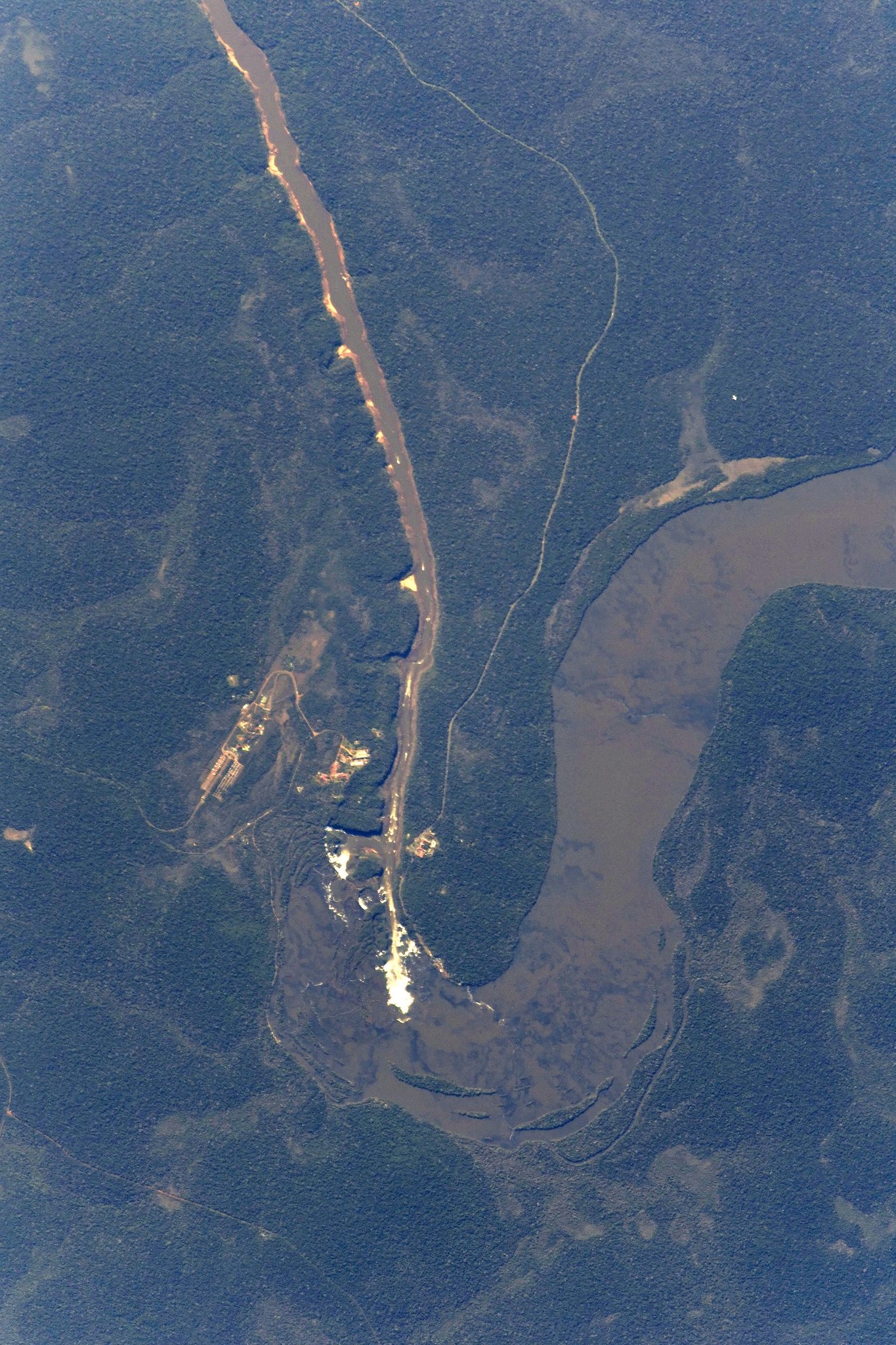[:ja]オレグ・アルテミエフ宇宙飛行士がISSから撮影した南米大陸のアルゼンチン (80%)とブラジル(20%)にまたがる世界最大のイグアスの滝です。イグアス (Iguazu) とは先住民のグアラニ族の言葉で大いなる水 (Y Guazú)という意味です。

パラナ川との合流点より23㎞上流のイグアス川にあり、季節で変化する水量により150から300の瀑布が出現し、画像中の最大の瀑布である悪魔の喉笛は高さ82m、幅150mのU字型で長さ700mにわたります。玄武岩からなるパラナ高原の端にあり、100年で30㎝削られ上流へ後退しています。合流点からみたパラナ川のやや上流のブラジルとパラグアイ国境上に世界2位の発電規模を持つイタイプダムがあります。
地上の様子はこちらです。

参考文献: Oleg Artemyev’s Tweet
ウェブ地球儀で地球俯瞰画像を見る: LiVEARTH
[Earthview Wonders] No.562: Iguazu Falls🇦🇷🇧🇷
Astronaut Oleg Artemyev captured from ISS Iguazu Falls, the largest waterfall system in the world, on the border of the Argentina and Brazil. The name “Iguazú” comes from the Guarani or Tupi words “y”, meaning “water”.

Iguazú Falls (Iguaçu Falls) divide the Iguazu River into the upper and lower Iguazu. For most of its course, the river flows through Brazil, but most of the falls are on the Argentine side (80%). The first European to record the existence of the falls was the Spanish Conquistador Álvar Núñez Cabeza de Vaca in 1541.
The local scenery on the ground is as follows.

Reference: Oleg Artemyev’s Tweet
See earthview photo gallery with web-globe: LiVEARTH[:en][Earthview Wonders] No.562: Iguazu Falls🇦🇷🇧🇷
Astronaut Oleg Artemyev captured from ISS Iguazu Falls, the largest waterfall system in the world, on the border of the Argentina and Brazil. The name “Iguazú” comes from the Guarani or Tupi words “y”, meaning “water”.

Iguazú Falls (Iguaçu Falls) divide the Iguazu River into the upper and lower Iguazu. For most of its course, the river flows through Brazil, but most of the falls are on the Argentine side (80%). The first European to record the existence of the falls was the Spanish Conquistador Álvar Núñez Cabeza de Vaca in 1541.
The local scenery on the ground is as follows.

Reference: Oleg Artemyev’s Tweet
See earthview photo gallery with web-globe: LiVEARTH[:]